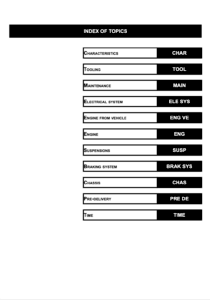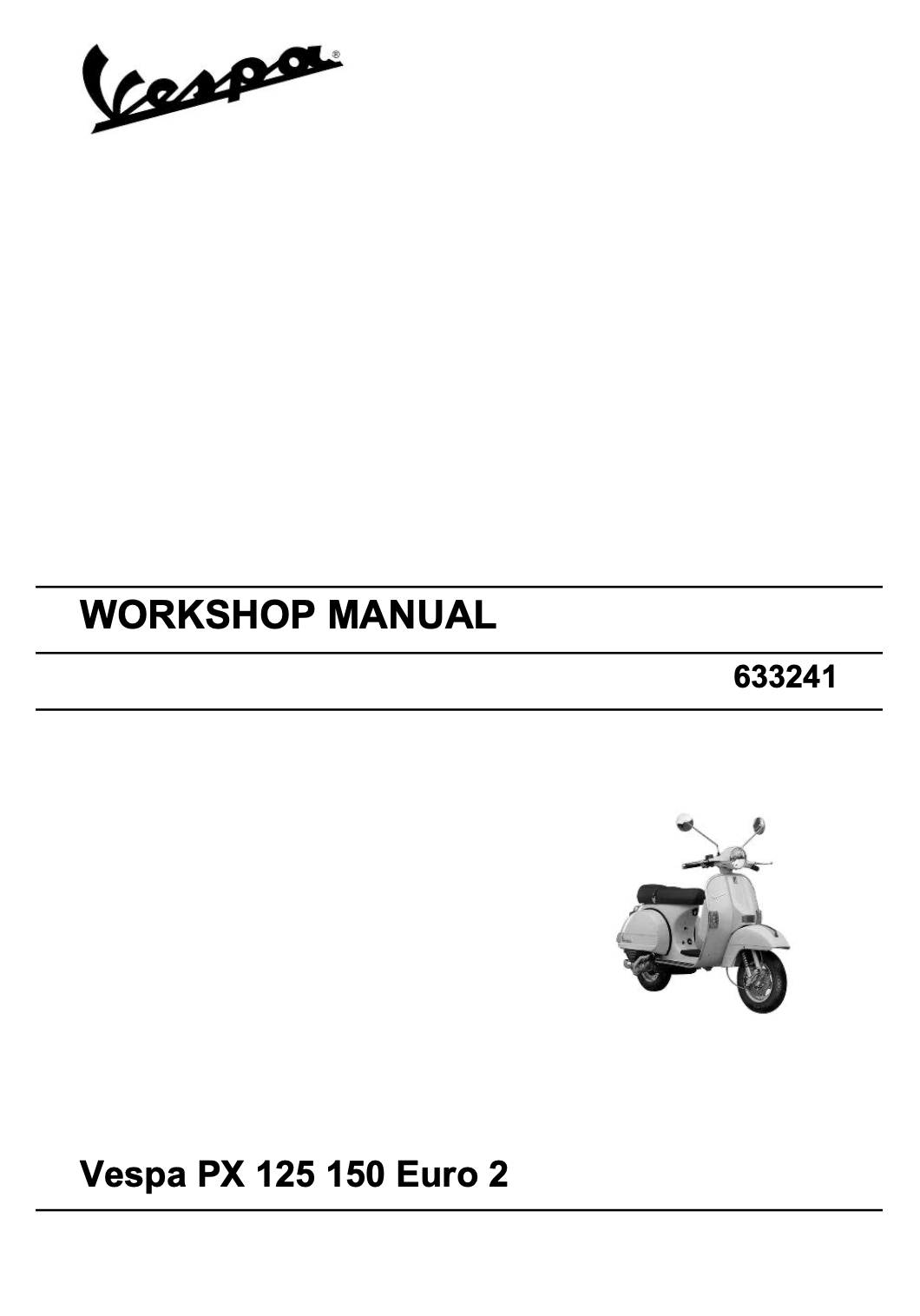Complete PDF version of the Service Manual for the PIAGGIO Vespa PX 125 150 Euro 2. A MUST for every Vespa PX125/150 owner.
Download: Immediately after payment!
OEM Original factory workshop manual.
Models covered by this manual: 1998 to 2008
Number of pages: 142 pages
Table of contents:


This PDF repair manual can be downloaded right after the payment process in complete, on the device of your choice.
We do not offer printed manuals, for the following reasons:
- it is more eco-friendly to use a digital version
- your manual never gets dirty or greasy
- you can always choose to print the specific page(s) you need to work on your bike
- you receive your manual immediately after payment
- it is searchable
PIAGGIO Vespa PX125/150
The Piaggio Vespa P/PX Series is a line of scooters sold under the Vespa brand.
History
The Vespa PX was introduced as the nuova linea model in 1977 in Milan (new line). The Vespa was originally designed with two drum brakes, a single-cylinder engine (aluminum head), and a steel frame, but it has since been modified with a new front suspension and a reworked rear axle for more stability. It was sold as the Vespa P 125 X, the Vespa P 200 E with an electronic ignition (E for Elettronica), and the Vespa P 150 X since 1978. The PX 80 debuted in 1981.
This electronic ignition was adopted to the other models, which were then known as Vespa PX125E and Vespa PX150E, and the Vespa P 200 E was renamed Vespa PX200E in 1982. The Arcobaleno series (marketed outside of Italy as the Lusso series) was released in 1983, featuring technological advances such as independent lubrication and fuel gauges. Furthermore, the front brake pads were made self-centering, the wiring was changed for simplicity of maintenance, the ignition and steering lock were now operated by the same key, and many small body alterations were done. These included expanding the glovebox, expanding the rear mudguard, and installing a new horn grille.
In 1985, a sportier model, the Vespa T5 Pole Position, with nearly 12 horsepower, reached the market. In 1992, to commemorate Vespa’s 50th anniversary, a scooter with the T5 engine and the PX style body was introduced. The Vespa PX 125 T5 Classic was the name given to this model.
The Vespa PX was discontinued in 2007, and the final models were available as Ultima Serie (last series), a limited edition featuring a windscreen, a baggage carrier in chrome, and chrome wheels with whitewall tires. The Vespa PX was reintroduced in 2010 with a catalytic converter installed to the two-stroke engine to fulfill Euro 3 pollution requirements.
A last model named the ’70th Anniversary’ has been made, and after stock is depleted, no more 2 stroke PXs will be built; only the color and seat distinguish it from the normal PX ZAPM74200 released in 2011.
The PX production halted in early 2017 because the PX failed to reach Euro 4 conformity.
Modifications
PX and related antique models are frequently modified by owners with larger engine kits and numerous component improvements. Many firms, like as Polini and Malossi, manufacture a wide range of aftermarket components ranging from suspension to exhaust to engine casing/kits. These enhancements have the potential to greatly improve the performance of PX and related devices.
PX125 and PX150 models are frequently modified to 177cc engine kits, while PX200 variants are frequently updated to 210cc. These enhancements are frequently accompanied by a larger carburetor, high flow fuel taps, and engine casing modification (ex. modifying a rotary valve case to accept a reed valve). Suspension, lighting, and other performance enhancements, as well as cosmetic add-ons, are very popular and widely accessible through a variety of specialist internet vendors.
Source: Wikipedia


